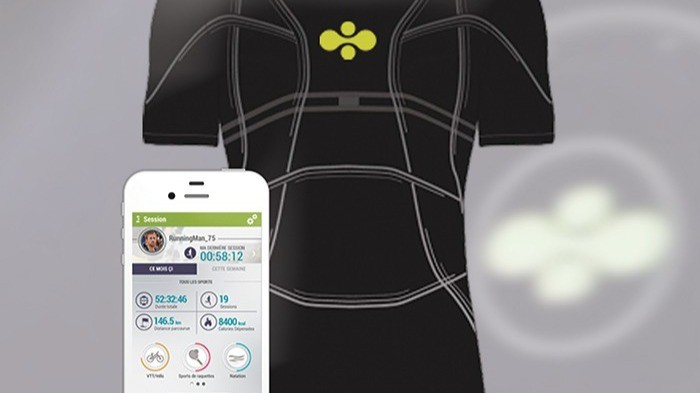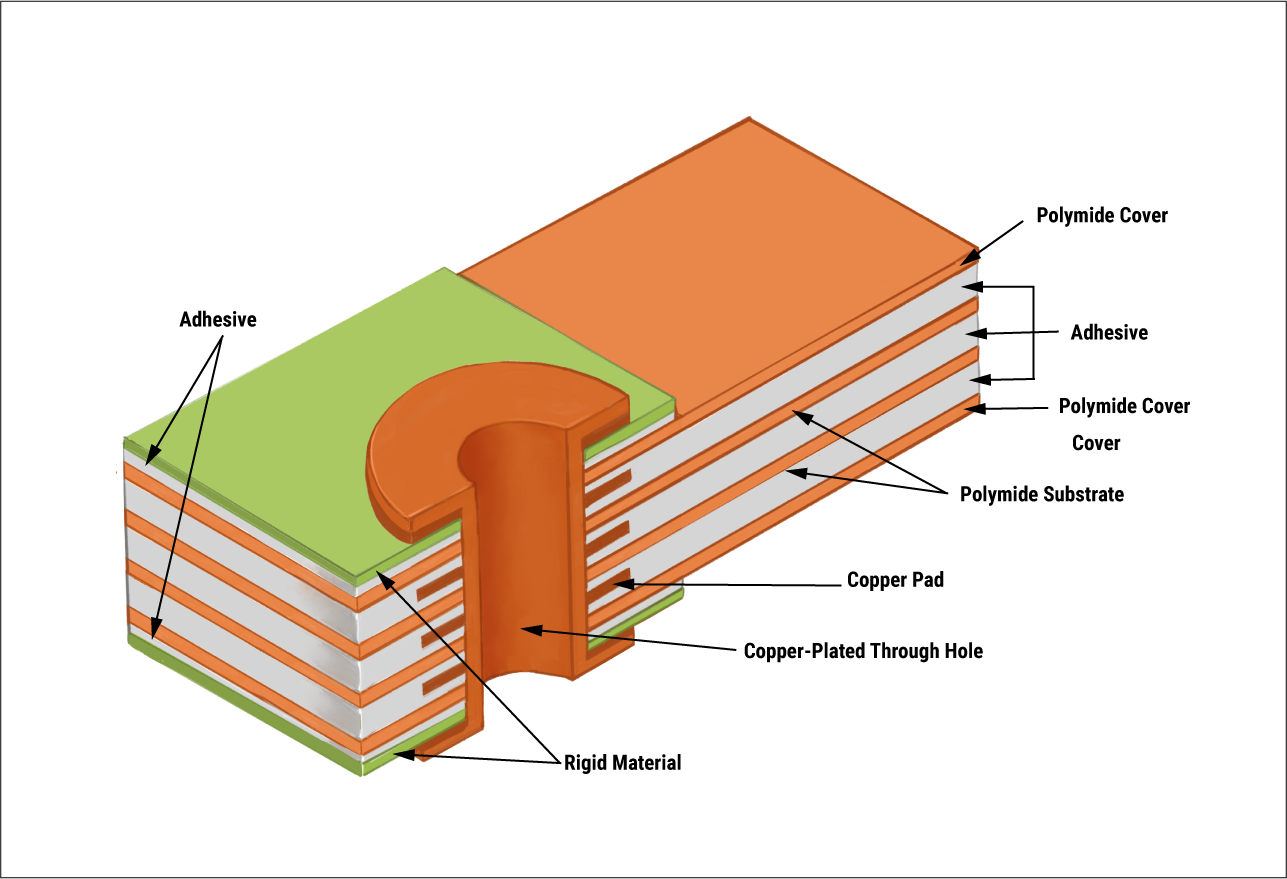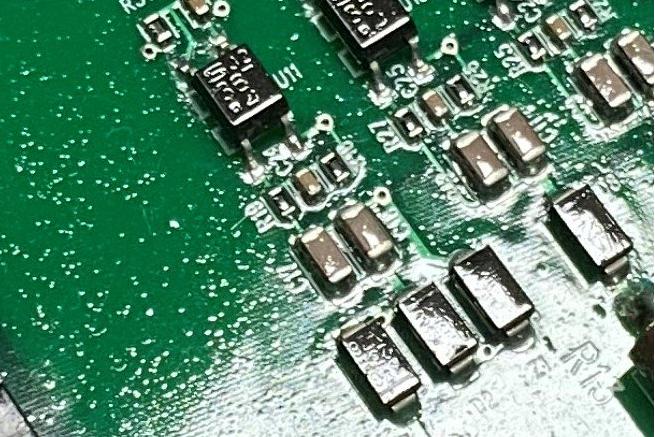Designing washable smart clothing PCBs is a game-changer in the wearable tech industry. Whether you're an engineer working on fitness trackers, medical wearables, or fashion-forward smart textiles, understanding how to create durable, washable printed circuit boards (PCBs) is essential. In this comprehensive guide, we'll walk you through the key aspects of washable PCB design guidelines, smart textile PCB cleaning, durable PCB materials for clothing, and conformal coating for wearable PCBs. Let's dive into the details to ensure your smart clothing withstands the rigors of daily wear and washing while maintaining optimal performance.
Why Washable PCBs Matter for Smart Clothing
Smart clothing integrates electronics into fabrics, enabling features like heart rate monitoring, temperature control, or even LED displays. However, one of the biggest challenges is ensuring these electronics can endure washing without damage. Traditional PCBs are rigid and sensitive to moisture, making them unsuitable for textiles that face frequent cleaning. Washable PCBs solve this by combining flexibility, durability, and protection against water and detergents.
By following specific design principles and material choices, you can create PCBs that maintain functionality even after dozens of wash cycles. This guide will cover everything from material selection to protective coatings, helping you design reliable smart clothing solutions.

Key Principles of Washable PCB Design Guidelines
Creating a washable PCB for smart clothing requires careful planning. Below are the core guidelines to ensure your design is both functional and durable in a textile environment.
1. Prioritize Flexibility in Design
Smart clothing demands PCBs that can bend and stretch with the fabric. Rigid boards are prone to cracking under stress, so opt for flexible or rigid-flex PCB designs. Flexible PCBs, often made from polyimide substrates, can conform to the shape of clothing and withstand repeated bending. For instance, a flexible PCB with a thickness of 0.1 mm to 0.2 mm can handle bending radii as low as 1 mm without damage.
Ensure that your trace widths and spacing account for flexibility. Wider traces (e.g., 0.2 mm or more) reduce the risk of cracking during movement. Also, avoid sharp corners in trace layouts, as they create stress points. Instead, use curved traces to distribute mechanical stress evenly.
2. Minimize Component Size and Weight
In wearable tech, every gram counts. Bulky components can make clothing uncomfortable and disrupt the natural drape of fabric. Use surface-mount devices (SMDs) with small footprints, such as 0402 or 0201 packages for resistors and capacitors. Additionally, integrate low-profile connectors to reduce bulk. Aim for a total PCB weight of under 5 grams for small wearable applications to maintain comfort.
3. Design for Low Power Consumption
Smart clothing often relies on small batteries or energy harvesting. Design your PCB to minimize power draw by using low-power microcontrollers and optimizing circuit layouts for efficiency. For example, ensure signal integrity by keeping high-speed traces (e.g., above 50 MHz) short to reduce power loss. This not only extends battery life but also reduces heat generation, which can degrade materials during washing.
Choosing Durable PCB Materials for Clothing
Material selection is critical when designing washable PCBs for smart textiles. The materials must resist moisture, chemicals in detergents, and mechanical stress. Here are the top considerations for durable PCB materials.
1. Substrate Materials for Flexibility and Durability
Polyimide is the go-to substrate for flexible PCBs in smart clothing due to its excellent thermal stability and resistance to moisture. It can withstand temperatures up to 260°C during soldering and remains stable even after exposure to water. For applications requiring even more flexibility, consider polyethylene terephthalate (PET) substrates, though they are less heat-resistant.
For added durability, look for substrates with a high tensile strength (e.g., above 100 MPa) to prevent tearing during washing or stretching. These materials ensure the PCB can endure at least 50 wash cycles without significant degradation.
2. Conductive Materials for Reliability
Traditional copper traces work well but may corrode when exposed to moisture over time. To enhance durability, use silver or gold-plated traces for better corrosion resistance. Silver conductive inks are also popular in smart textiles, especially for printed electronics directly on fabric. These inks maintain conductivity even after repeated washing, with some formulations retaining 90% of their performance after 60 wash cycles.
3. Encapsulation for Protection
Encapsulating the PCB or its components with a protective layer is vital. Silicone or epoxy encapsulation can shield sensitive areas from water ingress. Choose materials with a high IP rating (e.g., IP67 or higher) to ensure protection against immersion in water during washing.

Conformal Coating for Wearable PCBs: The Ultimate Shield
Conformal coating is a thin protective layer applied to PCBs to safeguard against moisture, dust, and chemicals. For washable smart clothing, conformal coating is non-negotiable. Here's how to choose and apply the right coating.
1. Types of Conformal Coatings
Several types of conformal coatings are suitable for wearable PCBs, each with unique benefits:
- Silicone Coatings: Highly flexible and resistant to moisture, ideal for PCBs in stretchable fabrics. They can handle temperatures from -55°C to 200°C.
- Polyurethane Coatings: Offers excellent chemical resistance against detergents and soaps, ensuring the PCB survives harsh washing conditions.
- Acrylic Coatings: Easy to apply and rework, providing decent moisture protection. However, they are less flexible than silicone.
- Parylene Coatings: A premium option with superior barrier properties against water and chemicals. It’s applied via vapor deposition for uniform coverage, though it’s more expensive.
For most smart clothing applications, silicone or polyurethane coatings strike the best balance between flexibility and protection. Ensure the coating thickness is between 25 to 75 micrometers for optimal performance without adding bulk.
2. Application Techniques
Conformal coatings can be applied via brushing, spraying, or dipping. For wearable PCBs, spraying is often preferred as it ensures even coverage on complex geometries. Use masking to protect connectors or areas that need to remain uncoated. After application, cure the coating as per manufacturer guidelines—typically at 60°C for 2 hours for silicone coatings—to achieve maximum durability.
3. Testing for Washability
After applying the coating, test the PCB under simulated washing conditions. Subject it to at least 30 wash cycles in a standard washing machine with mild detergent at 40°C. Measure electrical performance (e.g., resistance across traces should remain within 5% of the original value) to confirm the coating's effectiveness.

Smart Textile PCB Cleaning: Best Practices
Even with protective coatings, smart textile PCBs require proper cleaning methods to maintain functionality. Here are actionable tips for cleaning without causing damage.
1. Follow Washing Instructions
Always adhere to the washing guidelines provided with the smart clothing. Most washable PCBs are designed for gentle cycles at low temperatures (30°C to 40°C) with mild detergents. Avoid bleach or fabric softeners, as they can degrade protective coatings and conductive materials.
2. Hand Washing for Delicate Designs
For prototypes or high-value smart clothing, hand washing is safer. Use lukewarm water and a small amount of detergent. Gently agitate the fabric around the PCB area for 5-10 minutes, then rinse thoroughly to remove any residue. Air dry the clothing to prevent heat damage from tumble dryers.
3. Avoid Mechanical Stress
During cleaning, minimize bending or twisting the PCB area. Excessive mechanical stress can crack traces or dislodge components, even with flexible designs. If using a washing machine, place the clothing in a mesh laundry bag to reduce friction.
Testing and Validation for Washable PCBs
Before mass production, rigorously test your washable PCB design to ensure it meets durability and performance standards. Conduct the following tests:
- Moisture Resistance Test: Submerge the PCB in water for 30 minutes to simulate a wash cycle. Check for shorts or changes in resistance (should be less than 1% deviation).
- Mechanical Stress Test: Bend the PCB 1,000 times at a 90-degree angle to mimic fabric movement. Ensure no traces crack or delaminate.
- Wash Cycle Test: Run 50 wash cycles in a standard machine. Verify that electrical performance remains within acceptable limits (e.g., signal integrity above 95% of original).
Document the results and refine your design if any issues arise. This iterative process ensures reliability in real-world use.
Challenges and Solutions in Washable PCB Design
Designing washable PCBs for smart clothing comes with unique hurdles. Here are common challenges and how to overcome them.
1. Moisture-Induced Corrosion
Even with coatings, prolonged exposure to water can cause corrosion. Use corrosion-resistant materials like gold-plated traces and ensure complete encapsulation of exposed areas. Regularly test for leakage currents (should be below 1 μA) after washing.
2. Component Detachment
Components can loosen due to mechanical stress. Use stronger solder joints or adhesive reinforcement for critical parts. Opt for reflow soldering with a peak temperature of 245°C for reliable bonding.
3. Signal Degradation
Moisture and mechanical stress can affect signal integrity. Keep high-speed traces (e.g., 100 MHz signals) short and use ground planes to minimize interference. Post-wash testing should show signal loss of less than 0.5 dB.
Future Trends in Washable Smart Clothing PCBs
The field of smart textiles is evolving rapidly. Innovations like stretchable conductive inks and biodegradable substrates are making PCBs even more compatible with clothing. Additionally, advancements in wireless power transfer could eliminate the need for bulky batteries, further enhancing washability. Keep an eye on emerging standards for wearable electronics to stay ahead in design practices.
Conclusion: Building the Future of Smart Clothing
Designing washable smart clothing PCBs is a complex but rewarding endeavor. By following washable PCB design guidelines, selecting durable PCB materials for clothing, applying conformal coating for wearable PCBs, and practicing proper smart textile PCB cleaning, you can create reliable and long-lasting wearable tech. Focus on flexibility, protection, and rigorous testing to ensure your designs withstand the challenges of daily wear and washing.
With the right approach, your smart clothing projects can push the boundaries of innovation, delivering comfort and functionality to users worldwide. Start applying these principles in your next design, and watch your wearable tech thrive in even the toughest conditions.



